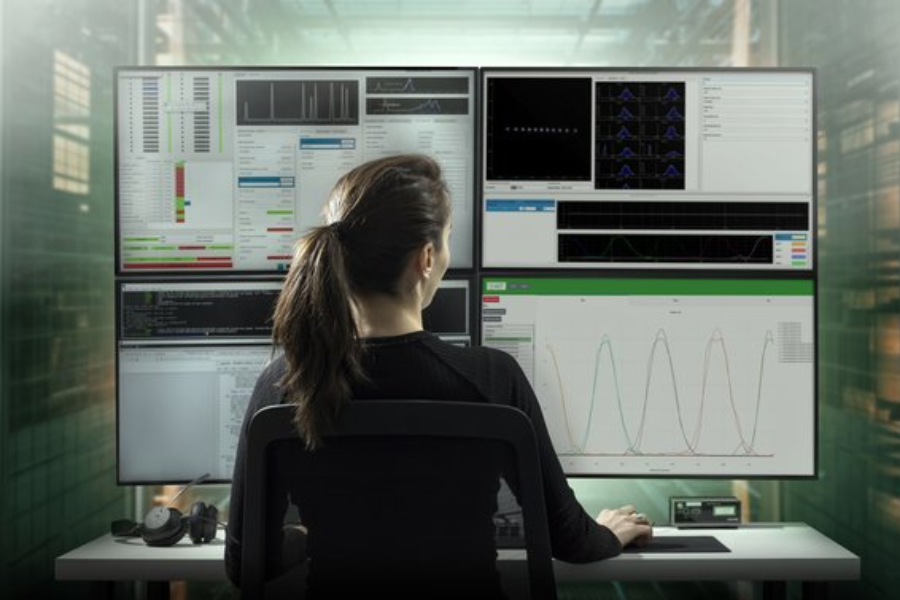In our increasingly digital world, coming across an unknown file like can understandably spark concern. You might notice this file in your Task Manager or during a routine security scan, leaving you wondering about its purpose and whether it poses any risks to your computer’s health. This guide will break down what $rw8t1ct.exe might be, how to check if it’s safe, and the steps you can take to handle it, ensuring your system remains secure and functioning optimally.
What Is an Executable File, and Why Does It Matter?
Executable files, commonly recognized by their .exe extension, play a vital role in running programs on your computer by carrying the instructions needed for various operations. Whether starting an app or managing background processes, these files make it all happen. However, executables can also bring risks, especially if they come from unverified sources. Harmful executables can introduce viruses or spyware, slow down your system, or even enable unauthorized access. That’s why it’s crucial to understand any unknown file—like $rw8t1ct.exe—and assess its safety.
Deciphering $rw8t1ct.exe: Potential Origins and Purposes
Files like $rw8t1ct.exe can find their way into your system through various channels and can have functions that range from essential to potentially harmful. Here are some common ways executable files end up on your computer:
- Software Installations: Many legitimate programs include .exe files needed for certain features to work. If you recently installed new software, $rw8t1ct.exe could be part of that package.
- Possible Malware: Cybercriminals sometimes disguise malware with names that seem harmless, making it appear as a standard file while it actually performs malicious actions.
- Downloads from Unverified Sources: Files from untrusted websites can come bundled with executables, which are often riskier compared to those downloaded from official sources.
Steps to Determine if $rw8t1ct.exe Is Safe
If you’re uncertain whether $rw8t1ct.exe is safe or potentially harmful, there are a few simple ways to check its purpose and legitimacy:
- Check the File Location: Trusted system files and known executable files are usually stored in default folders like C:\Program Files or C:\Windows\System32. Files in unusual locations might be suspicious and warrant a closer look.
- View File Properties: Right-clicking on $rw8t1ct.exe and selecting “Properties” can reveal details like the file’s origin, creation date, and sometimes its intended function. If the creator or date seems odd, this could indicate it’s not legitimate.
- Analyze in Task Manager: Task Manager shows which processes are running and their resource usage. If $rw8t1ct.exe is using a lot of CPU or memory, this could be a warning sign that it’s harmful.
Recognizing Signs of a Malicious Executable
A harmful executable can cause your computer to show certain warning signs. If you think $rw8t1ct.exe might be malicious, watch for these indicators:
- System Slowdowns: Malicious files often consume a lot of system resources, which can make your computer run more slowly than usual.
- Pop-ups and Redirects: If you’re seeing frequent pop-ups or unexpected redirects in your browser, it could point to adware or spyware connected to a suspicious file.
- Increased Network Usage: Many harmful programs use your network to communicate with outside servers, so any unusual spikes in network activity can be a red flag.
Tools for Scanning and Validating Suspicious Files
There are several effective tools and methods to check if $rw8t1ct.exe poses a threat. Here’s how you can use security software and online scanners to evaluate its safety:
- Antivirus Programs: Popular antivirus software like Norton, Bitdefender, or Kaspersky can scan files like $rw8t1ct.exe to detect and quarantine any threats.
- Anti-Malware Tools: Applications like Malwarebytes are particularly good at identifying and removing malware, adding an extra layer of security beyond standard antivirus software.
- Online Virus Scanners: Websites like VirusTotal let you upload a file to check it against multiple virus databases, giving you a more comprehensive view of its potential risk.
Removing Malicious Executables: A Step-by-Step Guide
If scans reveal that $rw8t1ct.exe is a harmful file, taking immediate steps to remove it can help safeguard your system. Here’s how to safely eliminate unwanted executables:
- Run a Full System Scan: Use your antivirus and anti-malware programs to conduct a thorough scan, and remove any threats detected.
- Stop the Process in Task Manager: If $rw8t1ct.exe is actively running, open Task Manager, locate the file, and select “End Task” to stop it from operating.
- Remove Related Files and Registry Keys: Some malware hides additional files or registry entries to reinstall itself. To completely remove the threat, delete any related files and registry entries.
Proactive Measures to Prevent Suspicious Files
Adopting preventive measures can greatly reduce the risk of issues from files like $rw8t1ct.exe. Here are some best practices to help keep your system secure:
- Only Download from Trusted Sources: Stick to official websites and verified app stores to avoid accidentally installing harmful files.
- Keep Security Software Up-to-Date: Regularly update your antivirus and anti-malware tools so they can detect the latest threats.
- Enable Firewalls: Firewalls act as a first line of defense by blocking unauthorized access, helping prevent malware from spreading.
- Perform Routine Data Backups: Frequent backups of important files make data recovery easier if malware compromises your system.
System Recovery if Malicious Files Affect Your Computer
If $rw8t1ct.exe has impacted your system’s health, you may need to consider restoration measures to repair any damage done:
- System Restore: System Restore lets you roll back your system to a previous, unaffected state. Choose a restore point before $rw8t1ct.exe appeared to eliminate changes it may have caused.
- Reinstall Compromised Programs: If a particular program was affected, reinstalling it can replace corrupted files and eliminate malware.
- Post-Restoration Scan: Always conduct a full scan after system restoration to confirm that no traces of $rw8t1ct.exe remain.
Tips for Routine System Maintenance
Regular maintenance can go a long way in identifying potential risks early and preserving your computer’s performance. Here are key maintenance tips to keep in mind:
- Run Disk Cleanup: Disk Cleanup frees up storage and can also remove unnecessary files that malware often uses to hide.
- Clear Temporary Files: Deleting temporary files helps minimize risks since malicious software sometimes embeds itself in these directories.
- Remove Unwanted Programs: Reviewing and uninstalling unused or unknown software can prevent these applications from running unverified executable files.
Advanced Tools for In-Depth File Analysis
If you’re comfortable with advanced diagnostics, tools like Process Explorer and Autoruns from Sysinternals can provide deep insights into the behavior of $rw8t1ct.exe and other processes:
- Process Explorer: This Microsoft tool displays detailed information about each active process, including resource usage and associated files.
- Autoruns: Autoruns shows all programs set to run at startup, making it easier to spot potentially unwanted executables.
- Sysinternals Suite: A powerful set of tools from Microsoft that can examine system configurations and identify problematic files or settings.
When to Seek Professional Help
If you’re unable to remove $rw8t1ct.exe, or if it persists after multiple deletion attempts, it may be time to consult a professional. Malware specialists have advanced tools and experience that can successfully eliminate persistent threats and restore a clean, functional system.
Conclusion
Encountering unknown files like $rw8t1ct.exe can be daunting, but knowing how to evaluate and handle these files is crucial for protecting your computer. Conducting regular scans, implementing preventive measures, and acting quickly to remove threats can greatly diminish risks. By following these practices and remaining alert, you can ensure your system stays secure and performs well, while reducing the chances of encountering suspicious executables. Always prioritize downloading from trusted sources and regularly back up your data to strengthen your system’s defenses against potential malware.
Get exclusive fashion insights and lifestyle tips on mainguestpost.com














Leave a Reply